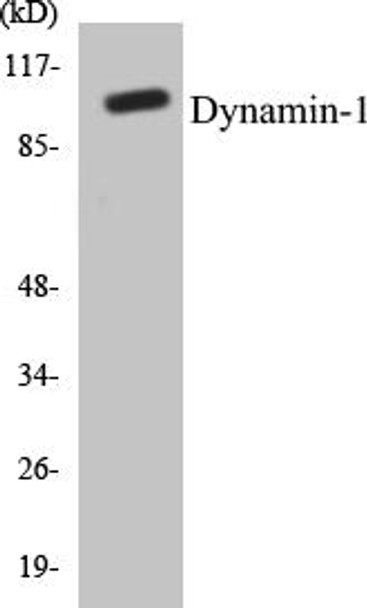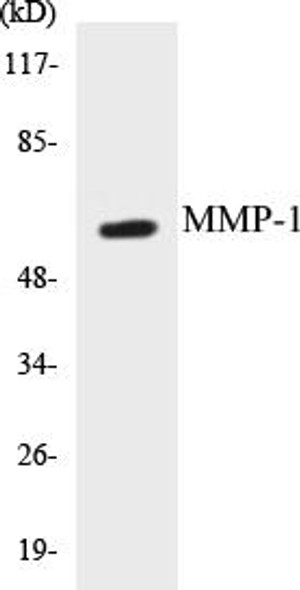Cell Biology
Dynamin-1 Colorimetric Cell-Based ELISA Kit
- SKU:
- CBCAB00627
- Product Type:
- ELISA Kit
- ELISA Type:
- Cell Based
- Research Area:
- Cell Biology
- Reactivity:
- Human
- Reactivity:
- Mouse
- Reactivity:
- Rat
- Detection Method:
- Colorimetric
Description
| Product Name: | Dynamin-1 Colorimetric Cell-Based ELISA |
| Product Code: | CBCAB00627 |
| ELISA Type: | Cell-Based |
| Target: | Dynamin-1 |
| Reactivity: | Human, Mouse, Rat |
| Dynamic Range: | > 5000 Cells |
| Detection Method: | Colorimetric 450 nmStorage/Stability:4°C/6 Months |
| Format: | 96-Well Microplate |
The Dynamin-1 Colorimetric Cell-Based ELISA Kit is a convenient, lysate-free, high throughput and sensitive assay kit that can detect Dynamin-1 protein expression profile in cells. The kit can be used for measuring the relative amounts of Dynamin-1 in cultured cells as well as screening for the effects that various treatments, inhibitors (ie siRNA or chemicals), or activators have on Dynamin-1.
Qualitative determination of Dynamin-1 concentration is achieved by an indirect ELISA format. In essence, Dynamin-1 is captured by Dynamin-1-specific primary antibodies while the HRP-conjugated secondary antibodies bind the Fc region of the primary antibody. Through this binding, the HRP enzyme conjugated to the secondary antibody can catalyze a colorimetric reaction upon substrate addition. Due to the qualitative nature of the Cell-Based ELISA, multiple normalization methods are needed:
| 1. | A monoclonal antibody specific for human GAPDH is included to serve as an internal positive control in normalizing the target absorbance values. |
| 2. | Following the colorimetric measurement of HRP activity via substrate addition, the Crystal Violet whole-cell staining method may be used to determine cell density. After staining, the results can be analysed by normalizing the absorbance values to cell amounts, by which the plating difference can be adjusted. |
| Database Information: | Gene ID: 1759, UniProt ID: Q05193, OMIM: 602377, Unigene: Hs.522413 |
| Gene Symbol: | DNM1 |
| Sub Type: | None |
| UniProt Protein Function: | DYN1: a microtubule-associated force-producing protein involved in producing microtubule bundles and able to bind and hydrolyze GTP. Most probably involved in vesicular trafficking processes. Concentrates within the presynaptic compartment and may participate in specialized neuronal functions such as rapid synaptic vesicle recycling. Part of a protein network that controls nucleation of actin from membranes. Contains one PH domain. |
| UniProt Protein Details: | Protein type:Microtubule-binding; Motility/polarity/chemotaxis; EC 3.6.5.5; Vesicle; Motor; Hydrolase Chromosomal Location of Human Ortholog: 9q34 Cellular Component: Golgi apparatus; membrane coat; microtubule; myelin sheath; photoreceptor inner segment; plasma membrane; synaptic vesicle Molecular Function:D2 dopamine receptor binding; GTP binding; GTPase activity; identical protein binding; nitric-oxide synthase binding; protein binding; protein C-terminus binding; protein complex binding; protein dimerization activity; protein kinase binding Biological Process: adult locomotory behavior; axon guidance; endocytosis; endosome organization and biogenesis; ephrin receptor signaling pathway; G-protein coupled receptor internalization; protein tetramerization; receptor-mediated endocytosis; sensory perception of sound; synaptic transmission, GABAergic Disease: Epileptic Encephalopathy, Early Infantile, 31 |
| NCBI Summary: | This gene encodes a member of the dynamin subfamily of GTP-binding proteins. The encoded protein possesses unique mechanochemical properties used to tubulate and sever membranes, and is involved in clathrin-mediated endocytosis and other vesicular trafficking processes. Actin and other cytoskeletal proteins act as binding partners for the encoded protein, which can also self-assemble leading to stimulation of GTPase activity. More than sixty highly conserved copies of the 3' region of this gene are found elsewhere in the genome, particularly on chromosomes Y and 15. Alternatively spliced transcript variants encoding different isoforms have been described. [provided by RefSeq, Jul 2008] |
| UniProt Code: | Q05193 |
| NCBI GenInfo Identifier: | 172046078 |
| NCBI Gene ID: | 1759 |
| NCBI Accession: | Q05193.2 |
| UniProt Secondary Accession: | Q05193,Q5SYX0, Q5SYX2, Q6P3T6, Q86VD2, A6NLM6, |
| UniProt Related Accession: | Q05193 |
| Molecular Weight: | 95,895 Da |
| NCBI Full Name: | Dynamin-1 |
| NCBI Synonym Full Names: | dynamin 1 |
| NCBI Official Symbol: | DNM1 |
| NCBI Official Synonym Symbols: | DNM; EIEE31 |
| NCBI Protein Information: | dynamin-1 |
| UniProt Protein Name: | Dynamin-1 |
| Protein Family: | Dynamin |
| UniProt Gene Name: | DNM1 |
| UniProt Entry Name: | DYN1_HUMAN |
| Component | Quantity |
| 96-Well Cell Culture Clear-Bottom Microplate | 2 plates |
| 10X TBS | 24 mL |
| Quenching Buffer | 24 mL |
| Blocking Buffer | 50 mL |
| 15X Wash Buffer | 50 mL |
| Primary Antibody Diluent | 12 mL |
| 100x Anti-Phospho Target Antibody | 60 µL |
| 100x Anti-Target Antibody | 60 µL |
| Anti-GAPDH Antibody | 60 µL |
| HRP-Conjugated Anti-Rabbit IgG Antibody | 12 mL |
| HRP-Conjugated Anti-Mouse IgG Antibody | 12 mL |
| SDS Solution | 12 mL |
| Stop Solution | 24 mL |
| Ready-to-Use Substrate | 12 mL |
| Crystal Violet Solution | 12 mL |
| Adhesive Plate Seals | 2 seals |
The following materials and/or equipment are NOT provided in this kit but are necessary to successfully conduct the experiment:
- Microplate reader able to measure absorbance at 450 nm and/or 595 nm for Crystal Violet Cell Staining (Optional)
- Micropipettes with capability of measuring volumes ranging from 1 µL to 1 ml
- 37% formaldehyde (Sigma Cat# F-8775) or formaldehyde from other sources
- Squirt bottle, manifold dispenser, multichannel pipette reservoir or automated microplate washer
- Graph paper or computer software capable of generating or displaying logarithmic functions
- Absorbent papers or vacuum aspirator
- Test tubes or microfuge tubes capable of storing ≥1 ml
- Poly-L-Lysine (Sigma Cat# P4832 for suspension cells)
- Orbital shaker (optional)
- Deionized or sterile water
*Note: Protocols are specific to each batch/lot. For the correct instructions please follow the protocol included in your kit.
| Step | Procedure |
| 1. | Seed 200 µL of 20,000 adherent cells in culture medium in each well of a 96-well plate. The plates included in the kit are sterile and treated for cell culture. For suspension cells and loosely attached cells, coat the plates with 100 µL of 10 µg/ml Poly-L-Lysine (not included) to each well of a 96-well plate for 30 minutes at 37°C prior to adding cells. |
| 2. | Incubate the cells for overnight at 37°C, 5% CO2. |
| 3. | Treat the cells as desired. |
| 4. | Remove the cell culture medium and rinse with 200 µL of 1x TBS, twice. |
| 5. | Fix the cells by incubating with 100 µL of Fixing Solution for 20 minutes at room temperature. The 4% formaldehyde is used for adherent cells and 8% formaldehyde is used for suspension cells and loosely attached cells. |
| 6. | Remove the Fixing Solution and wash the plate 3 times with 200 µL 1x Wash Buffer for five minutes each time with gentle shaking on the orbital shaker. The plate can be stored at 4°C for a week. |
| 7. | Add 100 µL of Quenching Buffer and incubate for 20 minutes at room temperature. |
| 8. | Wash the plate 3 times with 1x Wash Buffer for 5 minutes each time. |
| 9. | Add 200 µL of Blocking Buffer and incubate for 1 hour at room temperature. |
| 10. | Wash 3 times with 200 µL of 1x Wash Buffer for 5 minutes each time. |
| 11. | Add 50 µL of 1x primary antibodies (Anti-Dynamin-1 Antibody and/or Anti-GAPDH Antibody) to the corresponding wells, cover with Parafilm and incubate for 16 hours (overnight) at 4°C. If the target expression is known to be high, incubate for 2 hours at room temperature. |
| 12. | Wash 3 times with 200 µL of 1x Wash Buffer for 5 minutes each time. |
| 13. | Add 50 µL of 1x secondary antibodies (HRP-Conjugated AntiRabbit IgG Antibody or HRP-Conjugated Anti-Mouse IgG Antibody) to corresponding wells and incubate for 1.5 hours at room temperature. |
| 14. | Wash 3 times with 200 µL of 1x Wash Buffer for 5 minutes each time. |
| 15. | Add 50 µL of Ready-to-Use Substrate to each well and incubate for 30 minutes at room temperature in the dark. |
| 16. | Add 50 µL of Stop Solution to each well and read OD at 450 nm immediately using the microplate reader. |
(Additional Crystal Violet staining may be performed if desired – details of this may be found in the kit technical manual.)






